Design for life: Stefan Sagmeister’s ’The Happy Show’ arrives at MAK, Vienna
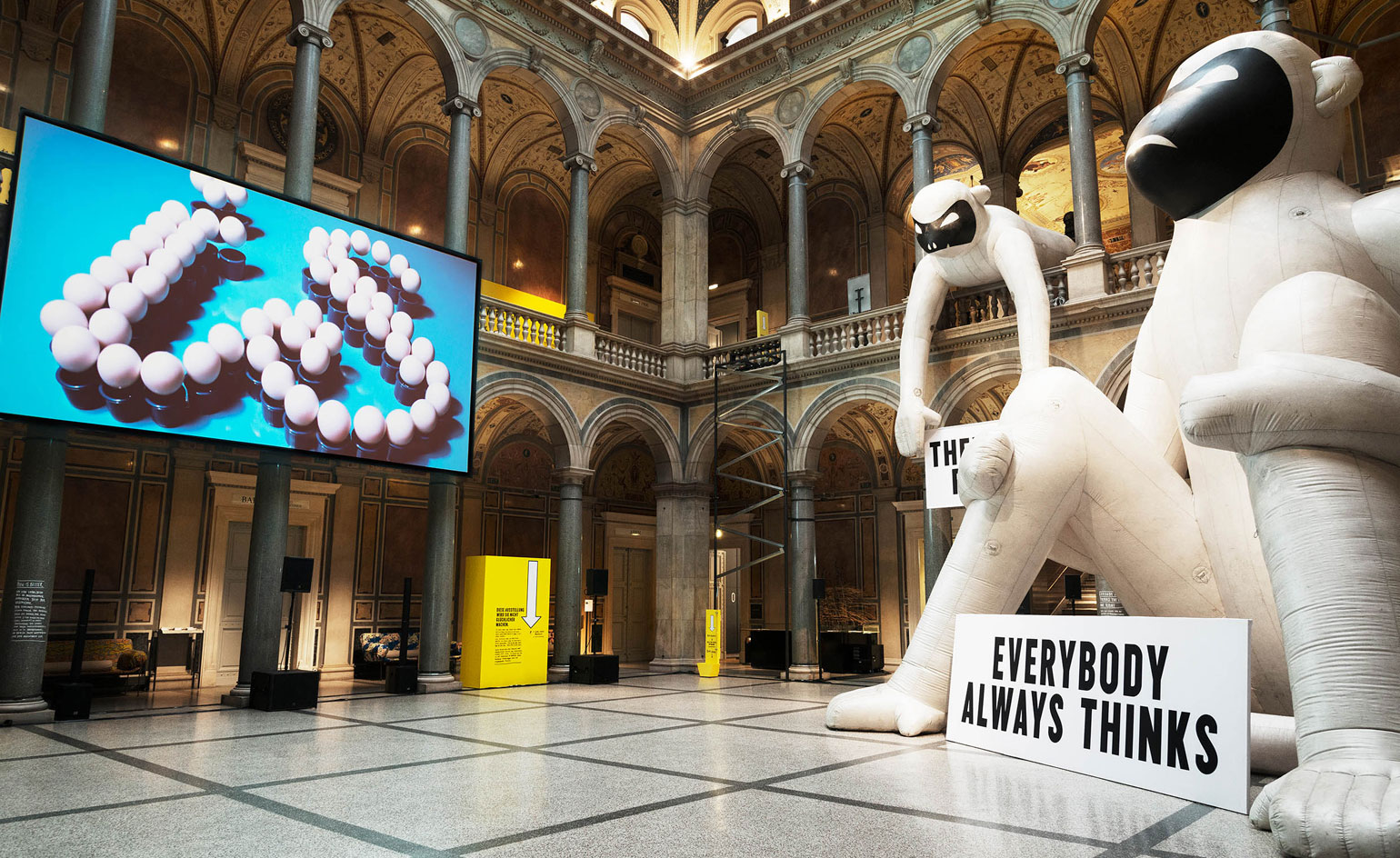
What makes us happy? That's the – sprawling, existentially crushing – question posited by design maven Stefan Sagmeister in his new show at Vienna's MAK. (Actually, he asks what makes us 'at least happier' – the man's a realist, clearly.)
The result of a full decade of ongoing investigation into the nebulous notion of happiness, the show – which has already been staged in North America and in Paris – is a multifaceted sensory treat, reflecting the playful approach to the work that Sagmeister also creates as half of Sagmeister & Walsh, the New York-based, multimedia design practice he runs with Jessica Walsh.
The show has its roots in a lecture, 'Design and Happiness' that Sagmeister started giving ten years ago. This led to the conceiving of a film on the topic, for which the designer developed the 'invasive' research methods – engaging in medication and cognitive therapy, as well as taking the antidepressant Lexapro for three months – that form the basis of the research behind 'The Happy Show'. (Funding for the film was completed via Kickstarter earlier this year.)
Sagmeister has staged interventions throughout the museum – through the main hall, Design Lab, across the permanent collection of contemporary art and around the institution's stairwells, corridors and elevators. These are accompanied by texts written by the artist, explaining the work, and offering personal insights and ruminations on their conception.
Towering over the entrance hall are two monolithic inflatable apes, holding placards that together read 'EVERYBODY ALWAYS THINKS / THEY ARE RIGHT'. 'This is as true for all the little crap fights in my life, as it is for all the big conflicts in the world,' Sagmeister writes of the sentiment. 'I – and I suspect everybody else, too – was born a giant egoist.'
Elsewhere, a bicycle is set up in front of a neon wall installation encouraging the public to follow through on the things they think they should do or try throughout their lives (the installation various flashes the statements 'Actually doing the things / I set out to do increases / My overall level of satisfaction' and 'Seek discomfort'). A note of guidance on the bike states the rider should 'Pedal slow and steady. Do not go crazy' – salient advice in anyone's book.
A series of numbered gum ball dispensers require the observer to take a sweet in accordance with how happy they are on a scale of one to ten, while a plethora of arms sticking out from a wall offer Indonesian ginger candies (no task here – they're just Sagmeister's favourites). A technicolour interactive projection reading 'Step up to it' is derived from advice from the artist's therapist on his avoidance of confrontation, and a sound and light sculpture called 'Feel other feel' recommends maintaining a level of sympathetic empathy with those around us. It's all overwhelmingly positive stuff, but never cloying.
Record cover designs for Lou Reed and David Byrne are also on display; representing the creative development of Sagmeister's design career, lest we forget that this is a show based around his personal conceptions of happiness.
'Above all,' he explained to MAK/ZINE, the museum's own art and design journal, of his experiences researching the concept, 'I learned that happiness cannot be pursued; it has to come about on its own.' The exploded aphorisms that comprise the exhibition's collected works could, in the hands of less intuitive artist, come across as twee or patronising. In Sagmeister's hands, they just read like good advice.
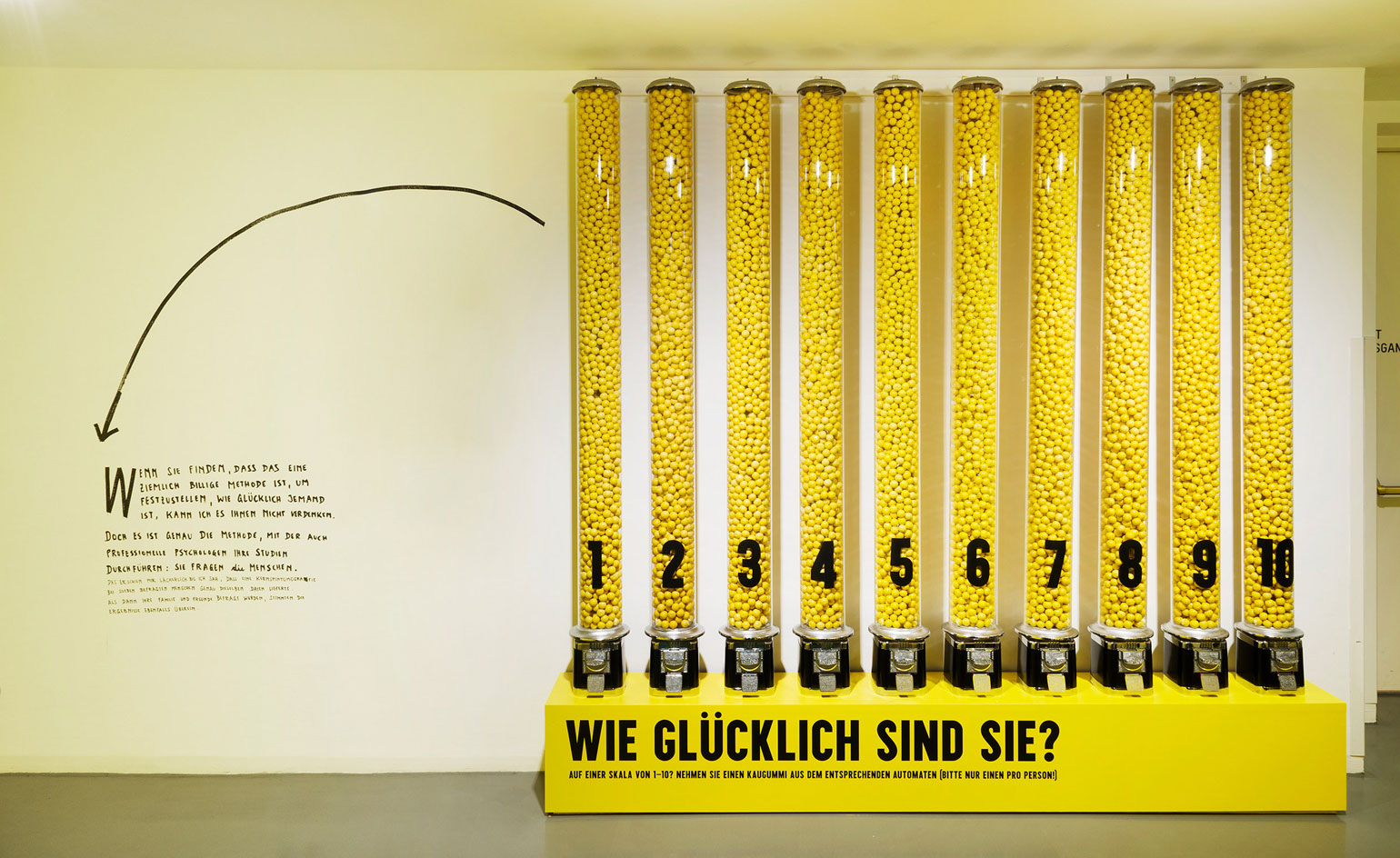
The result of a full decade of ongoing investigation into the nebulous notion of happiness, the show – which has already been staged in North America and in Paris – is a multifaceted sensory treat, reflecting the playful approach to the work that Sagmeister also creates as half of Sagmeister & Walsh. Pictured: How happy are you?

The show has its roots in a lecture, 'Design and Happiness' that Sagmeister started giving ten years ago. Pictured: Don’t expect people to change.
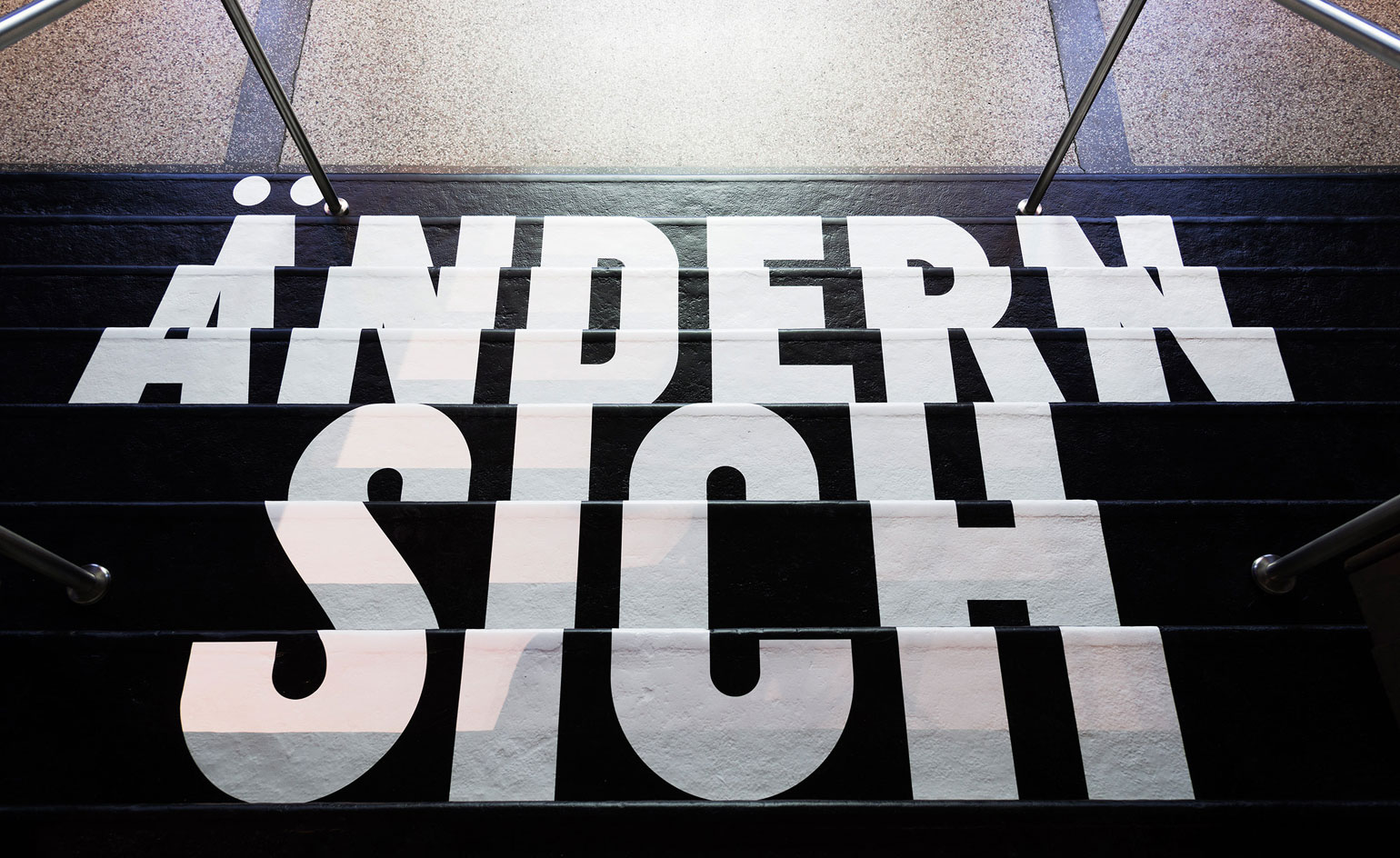
This led to the conceiving of a film on the topic, for which the designer developed the 'invasive' research methods that form the basis of the research behind the show. Pictured: Don’t expect people to change.
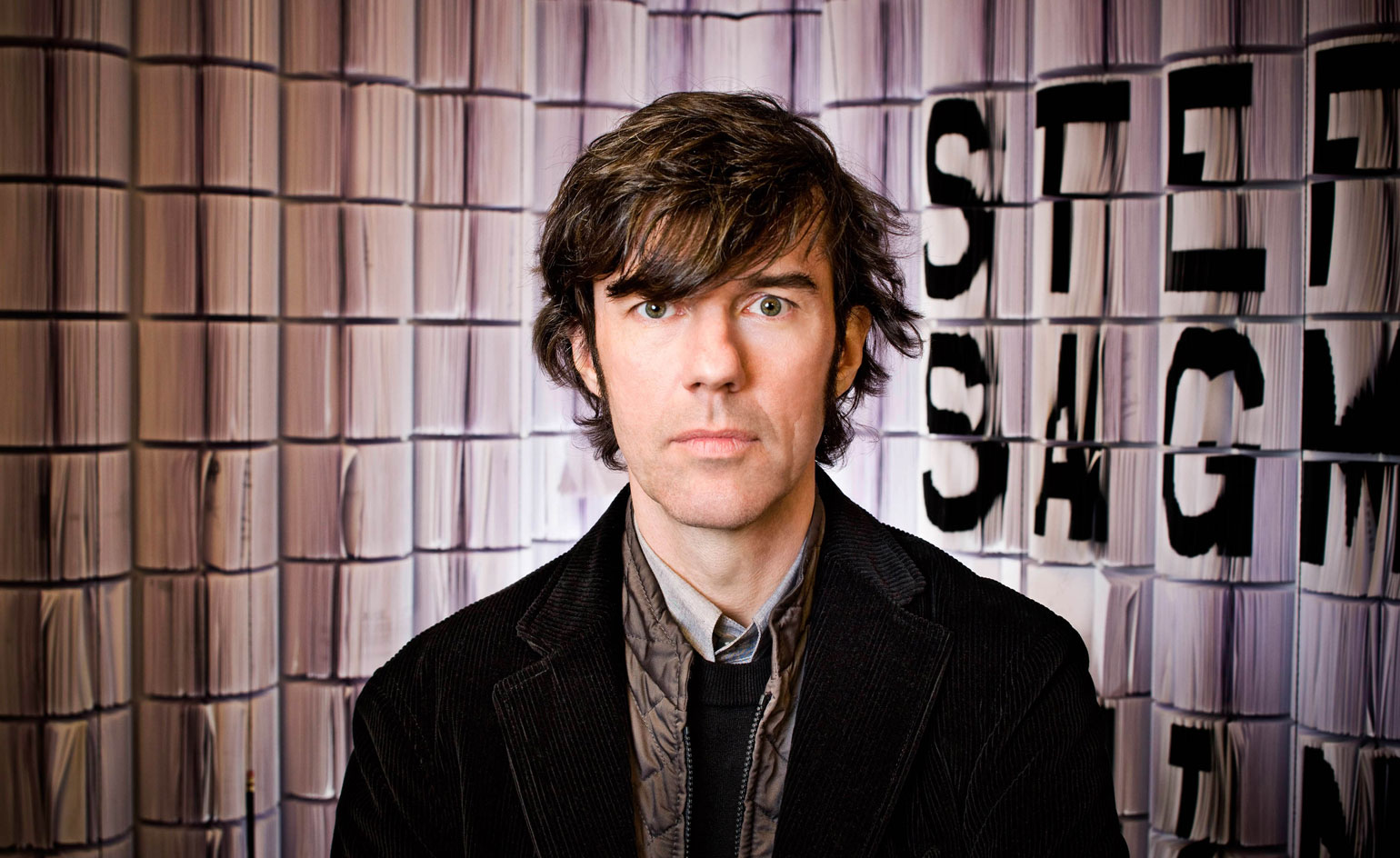
Stefan Sagmeister, courtesy Sagmeister & Walsh
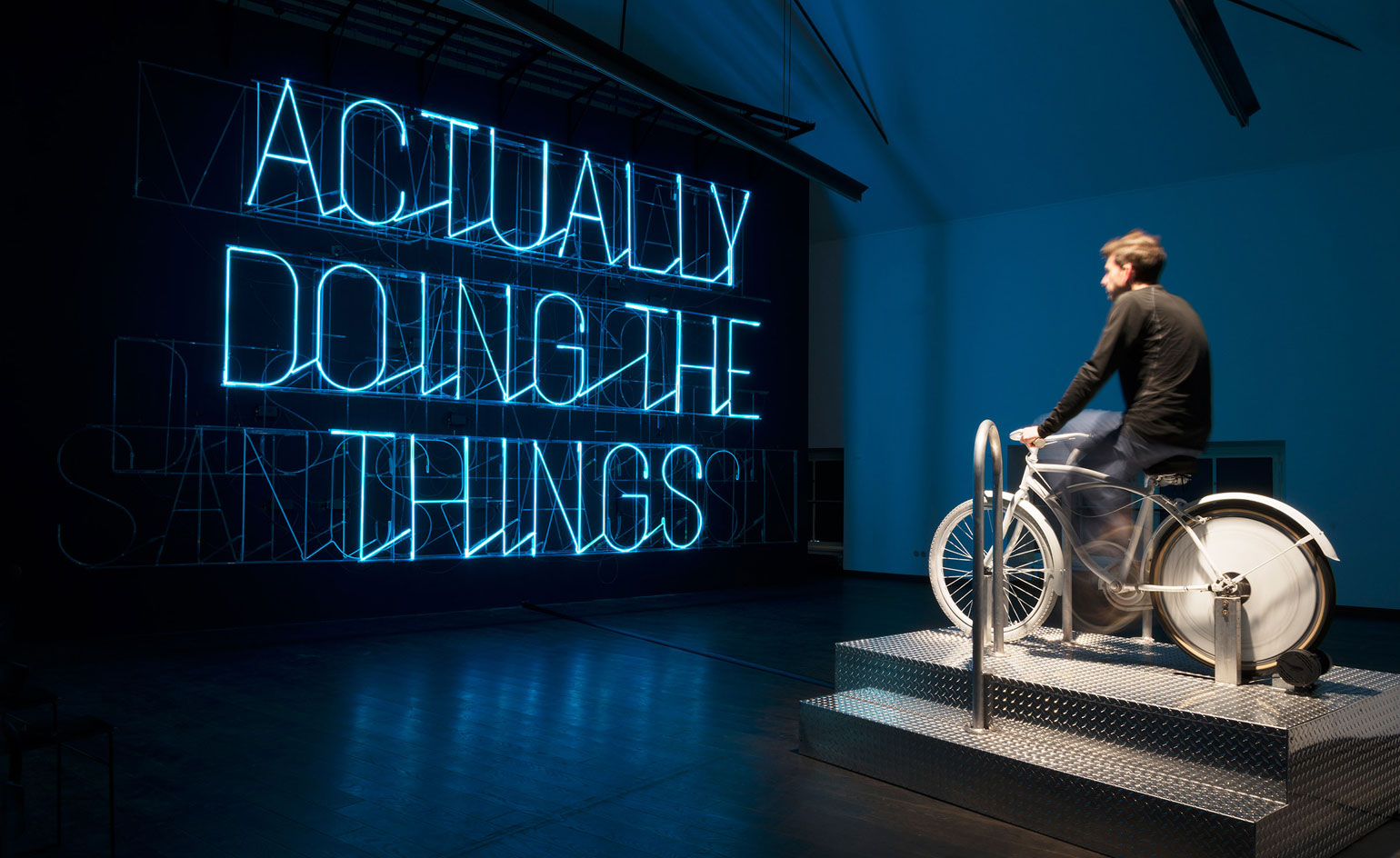
Sagmeister has staged interventions throughout the museum. These are accompanied by texts written by the artist, explaining the work, and offering personal insights and ruminations on their conception. Pictured: Actually Doing the Things I Set Out to Do Increases My Overall Level of Satisfaction, 2012. Execution: Kevin O’Callahan. Courtesy MAK/Aslan Kudrnofsky
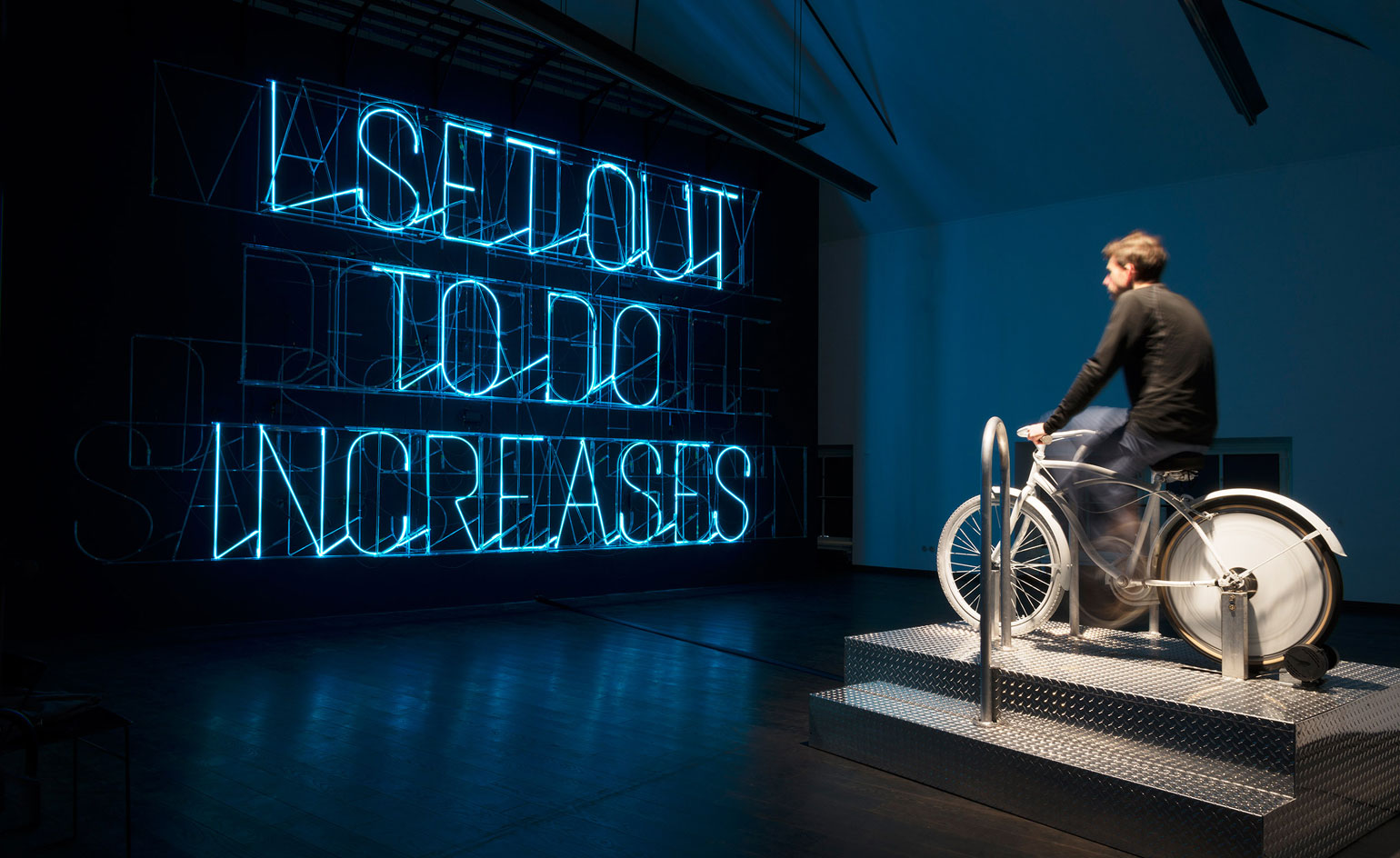
A bicycle is set up in front of a neon wall installation in the permanent collection halls, encouraging the public to follow through on the things they think they should do or try throughout their lives. Pictured: Actually Doing the Things I Set Out to Do Increases My Overall Level of Satisfaction, 2012. Execution: Kevin O’Callahan.
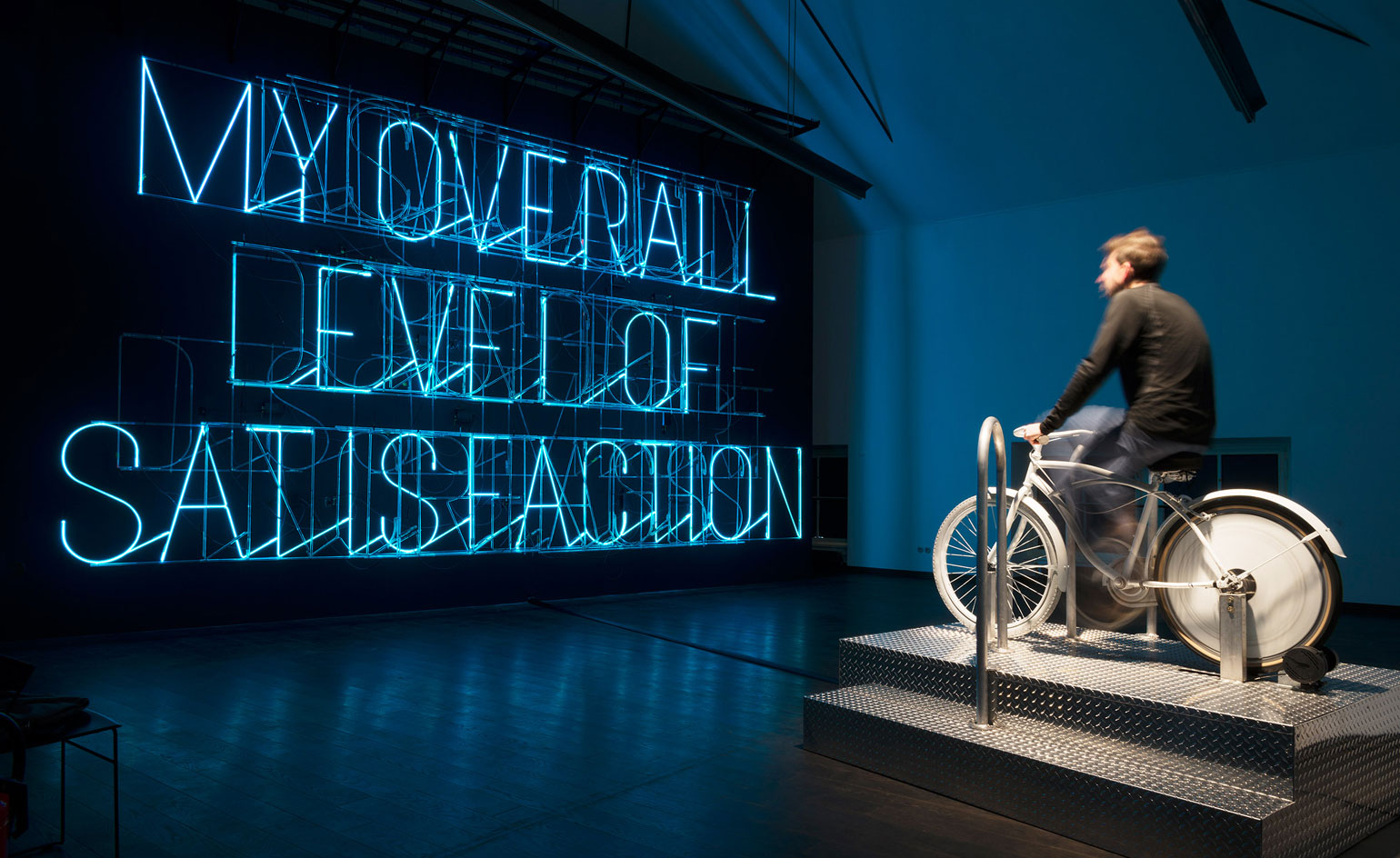
Actually Doing the Things I Set Out to Do Increases My Overall Level of Satisfaction, 2012. Execution: Kevin O’Callahan.
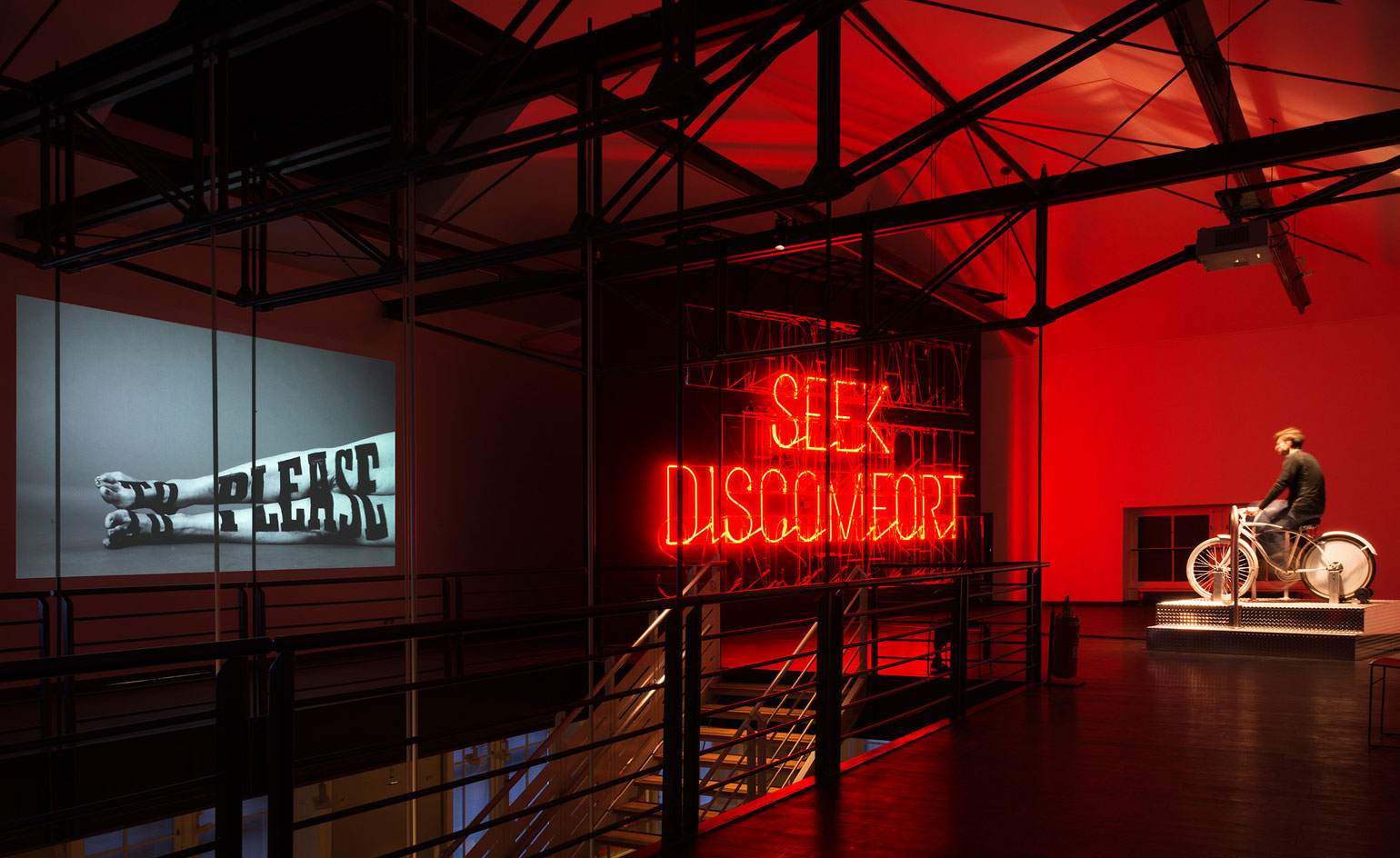
Actually Doing the Things I Set Out to Do Increases My Overall Level of Satisfaction, 2012. Execution: Kevin O’Callahan.
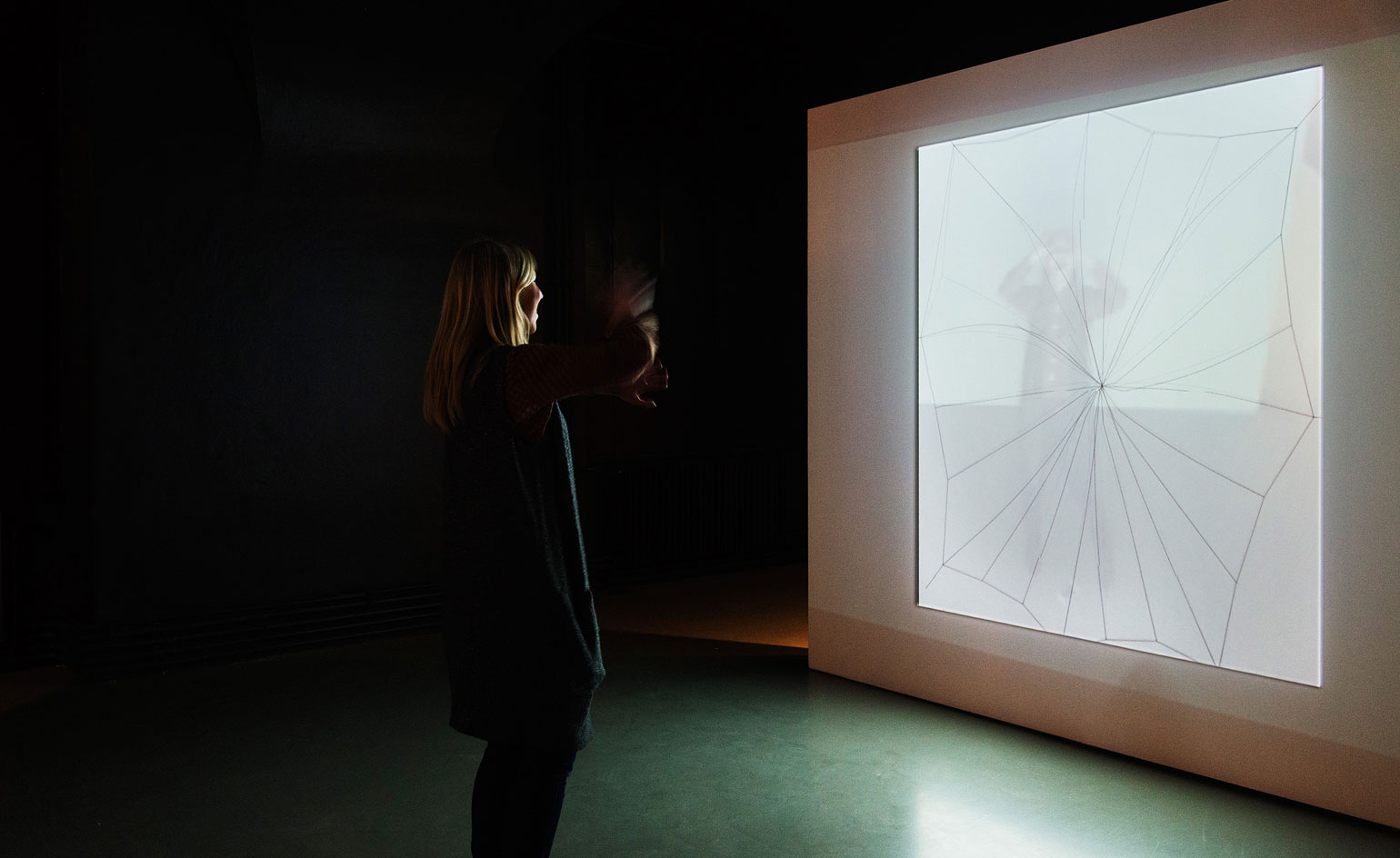
'People who do not cheat are happier than people who do, and, surprisingly, the cheaters also do worse moneywise in the long run. The same is true for entire nations: the really corrupt ones always do terribly economically,' writes Sagmeister in the accompanying notes for the work Being Not Truthful Always Works Against Me, 2006, created in collaboration with Ralph Ammer.

A plethora of arms sticking out from a wall offer Indonesian ginger candies (Sagmeister's favourites). Pictured: MY favorite CANDIES ANYWHERE, JIN JIN GINGER CANDY from INDONESIA.

A technicolour interactive projection reading 'Step up to it' is derived from advice from the artist's therapist on his avoidance of confrontation. Pictured: Step Up to It, 2012. In collaboration with Daniel Scheibel and Zander Brimijoin (of Red Paper Heart), Christopher Fung and Simon Egli.

The works range from informative and sincere to knowingly irreverent. Pictured: There is no moral reason to have children.
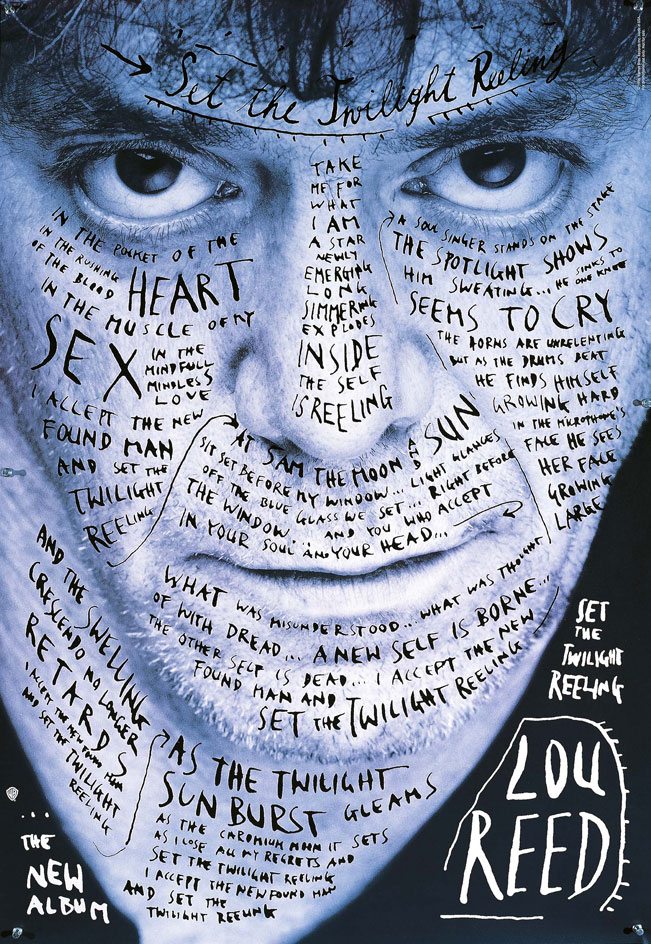
Record cover designs for Lou Reed and David Byrne are also on display; representing the creative development of Sagmeister's design career, lest we forget that this is a show based around his personal conceptions of happiness. Pictured: Lou Reed, Set the Twilight Reeling, 1996.
INFORMATION
'The Happy Show' is on view until 28 March 2016
ADDRESS
MAK – Austrian Museum of Applied Arts / Contemporary Art
Stubenring 5
1010 Vienna
Receive our daily digest of inspiration, escapism and design stories from around the world direct to your inbox.
Tom Howells is a London-based food journalist and editor. He’s written for Vogue, Waitrose Food, the Financial Times, The Fence, World of Interiors, Time Out and The Guardian, among others. His new book, An Opinionated Guide to London Wine, will be published by Hoxton Mini Press later this year.
-
 Wallpaper* Best Use of Material 2026: Beit Bin Nouh, Saudi Arabia, by Shahira Fahmy
Wallpaper* Best Use of Material 2026: Beit Bin Nouh, Saudi Arabia, by Shahira FahmyBeit Bin Nouh by Shahira Fahmy is a captivating rebirth of a traditional mud brick home in AlUla, Saudi Arabia - which won it a place in our trio of Best Use of Material winners at the Wallpaper* Design Awards 2026
-
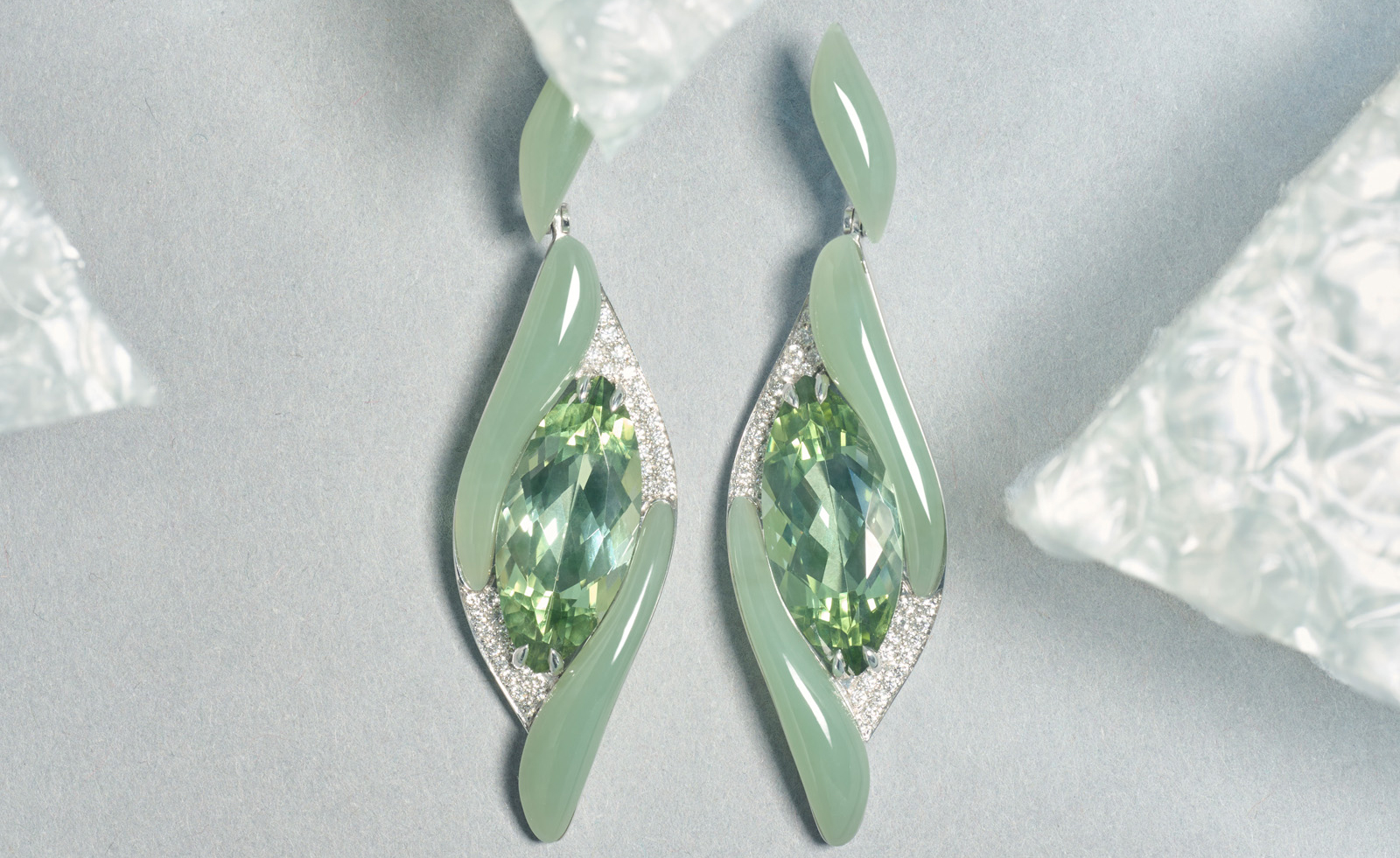 Wallpaper* Design Awards: Boghossian’s gem wizardry dazzles in high jewellery
Wallpaper* Design Awards: Boghossian’s gem wizardry dazzles in high jewelleryBoghossian's unique mix of craftsmanship and modern design is behind the edgy elegance of its jewellery – a worthy Wallpaper* Design Awards 2026 winner
-
 Wallpaper* Design Awards: cult London fashion store Jake’s is our ‘Best Retail Therapy’
Wallpaper* Design Awards: cult London fashion store Jake’s is our ‘Best Retail Therapy’Founded by Jake Burt, one half of London-based fashion label Stefan Cooke, the buzzy, fast-changing store takes inspiration from Tracey Emin and Sarah Lucas’ 1993 The Shop and Tokyo’s niche fashion stores